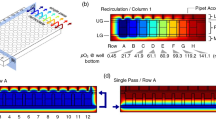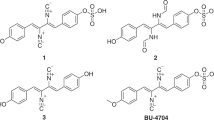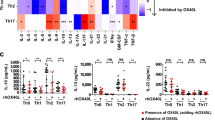Abstract
THE effects of a toxic be substance upon a cell are not instantances. There is always a course of events leading up to the changes, reversible or otherwise, which are imposed upon the organisation of the normal cell by a toxic substance. The action generally occurs in two stages. In the first stage, the toxic fact or reacts with certain components of the cell. In the second, and from some points of view more important stage, the organisation of the cell changes because of the impairment of function of the components directly affected by the toxic factor. The second stage does not, of course, occur until the activities of the cell involve the operation of the components of which the function is impaired ; and so it may readily happen that only when the cell is disturbed from a state of rest does the action of a toxic substance become apparent or lethal.
This is a preview of subscription content, access via your institution
Access options
Subscribe to this journal
Receive 51 print issues and online access
$199.00 per year
only $3.90 per issue
Buy this article
- Purchase on SpringerLink
- Instant access to full article PDF
Prices may be subject to local taxes which are calculated during checkout
Similar content being viewed by others
References
Cooper, P. D., and Rowley, D., Nature, 163, 480 (1949).
Pratt, R., and Dufrenoy, J., Bact. Rev., 12, 79 (1948).
Smiles, J., Welch, F. V., and Elford, W. J., J. Gen. Microbiol., 2, 220 (1948).
Hirsch, J., C.R. Ann. Arch. Soc. Turque Sci. Phys. Nat., Fasc. 12 (1943–44).
Chain, E., and Duthie, E. S., Lancet, i, 652 (1945).
Tulasne, R., and Vendreley, R., Nature, 161, 316 (1948).
Parker, R. F., and Luse, S., J. Bact., 56, 75 (1948).
Lee, S. W., Foley, E. J., and Epstein, J. A., J. Bact., 48, 393 (1944).
Gale, E. F., and Taylor, E. S., J. Gen. Microbiol., 1, 314 (1947).
Gale, E. F., and Rodwell, A. W., J. Gen. Microbiol., 3, 127 (1949).
Krampitz, L. O., and Werkman, C. H., Arch. Biochem., 12, 57 (1947).
Gros, F., and Machboeuf, M., Ann. de l'Inst. Past., 74, 368 (1948).
Gale, E. F., Bull. Johns Hopkins Hosp., 83, 171 (1948).
Mitchell, P. (to be published shortly).
Malmgren, B., and Heden, C., Acta Path. et Microbiologica, Scand., 24, 417 (1947).
Park, J. T., and Johnson, M. J., J. Biol. Chem., 179, 585 (1949).
Author information
Authors and Affiliations
Rights and permissions
About this article
Cite this article
MITCHELL, P. Some Observations on the Mode of Action of Penicillin. Nature 164, 259–262 (1949). https://doi.org/10.1038/164259a0
Issue date:
DOI: https://doi.org/10.1038/164259a0
This article is cited by
-
Některé biologické a biochemické vlastnosti acidoresistentních a neacidoresistentních kmenůMycobacterium phlei
Československá Mikrobiologie (1958)
-
Reversal by folic acid of penicillin action on growth and on pentose nucleic acid synthesis inLactobacillus Casei
Proceedings / Indian Academy of Sciences (1957)
-
Occurrence of a Phosphoric Ester in Certain Bacteria: Its Relation to Gram Staining and Penicillin Sensitivity
Nature (1950)



